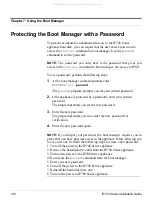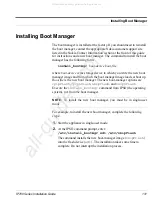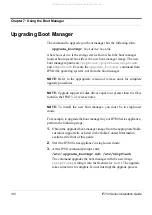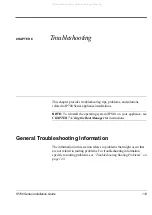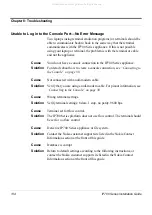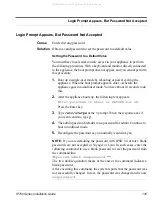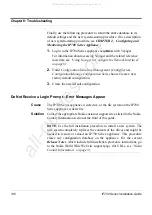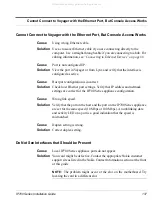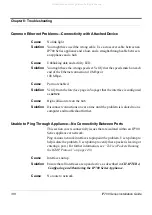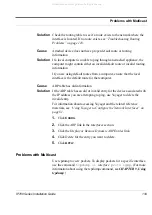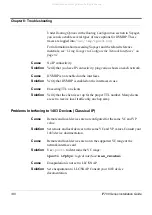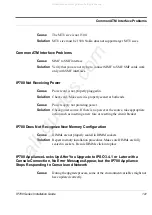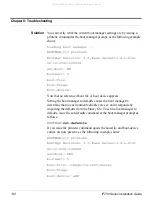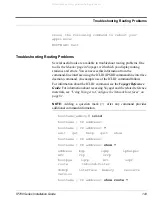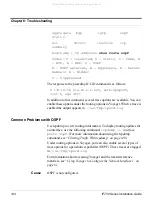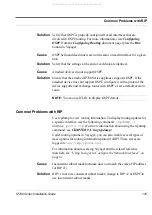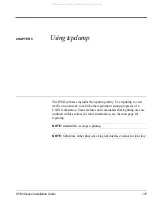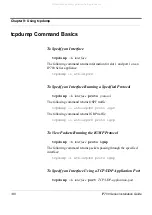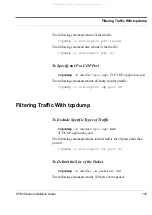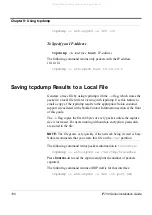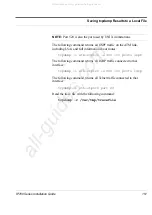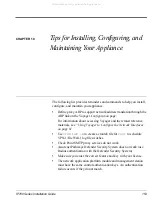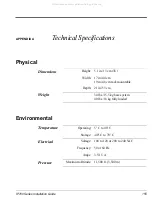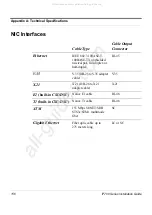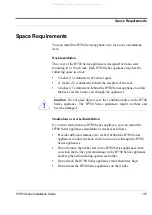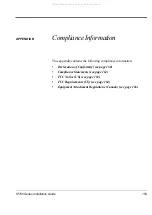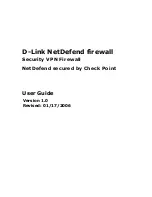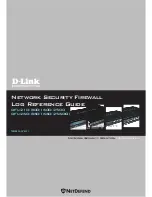
Chapter 8: Troubleshooting
144
IP700 Series Installation Guide
aggregate bgp igrp ospf
static
all direct inactive rip
summary
hostname | IP address>
show route ospf
Codes: C - connected, S - static, I - IGRP, R
- RIP, B - BGP, O - OSPF
E - OSPF external, A - Aggregate, K - Kernel
Remnant H - Hidden
S - Suppressed
The response to the preceding ICLID command is as follows:
0 172.16/16 via 10.1.1.225, eith-sp4p1c0,
cost 3, age 3111
In addition to this command, several trace options are available. You can
enable these options under the routing options in Voyager. When a trace is
enabled the output appears in
/var/tmp/ipsrd.log
Common Problems with OSPF
Use tcpdump to view routing information. To display routing updates for
an interface, use the following command:
tcpdump -i
interface
proto ospf
. (For more information about using the tcpdump
command, see
“Filtering Traffic With tcpdump” on page 149
.)
Under routing options in Voyager, you can also enable several types of
trace options for open shortest path first (OSPF). These traces are logged
in
/var/tmp/ipsrd.log
.
For information about accessing Voyager and the related reference
materials, see
“Using Voyager to Configure the Network Interfaces” on
page 81
.
Cause
OSPF is not configured.
All manuals and user guides at all-guides.com

